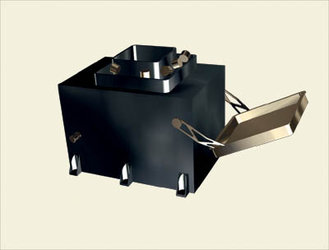Staying power: An interview with Jean Gabriel Trotignon
Dr Jean Gabriel Trotignon has studied the interactions of the solar wind with Solar System objects for over 25 years. So he is ready for the wait for Rosetta's RPC Mutual Impedance Probe to be part of first ever 'in situ' study of a comet.
| Dr Jean Gabriel Trotignon Principal Investigator, RPC/MIP, Rosetta mission Senior Research Scientist, Laboratoire de Physique et Chimie de l’Environnement, Centre National de la Recherche Scientifique, France. Born: 1949, in Oran, Algeria PhD in physics, University of Orléans. Entered the Centre de Recherche en Physique de l’Environnement in 1976, developing programs for analysing and interpreting geophysical data from the ISEE-1 spacecraft. In 1984, he moved to the Laboratoire de Physique et Chimie de l’Environnement, in Orléans. Since then, he has been Co-Investigator for experiments on the Vega 1 and 2 missions to Comet Halley, then the Phobos 1 and 2 spacecraft, and for the WHISPER sounder on board ESA’s Cluster satellites. In 1996, he became the Principal Investigator for the RPC/MIP. He is married to Christine, with three children. When time and weather allow, he enjoys walking, especially on Auvergne’s volcanoes, skiing, and sailing in Brittany with his family.
|
ESA: The journey to the comet will take over 10 years, what is it like to be involved in such a long mission?
Waiting ten years to get the first comet data is a little bit frustrating.
JG Trotignon: Waiting ten years to get the first comet data is a little bit frustrating. But, unlike lander experimenters, we will have the opportunity to test our experiment close to Mars, Earth and asteroids long before then.
For example, the closest approach to Mars should be about 250 kilometres, which is inside the ionosphere, a region around Mars which is poorly known. As part of the Rosetta Plasma Consortium (RPC), the Mutual Impedance Probe or MIP will make valuable and new observations of the thermal electron population close to Mars. Numerical computations will also be performed during the transfer-to-comet phase to prepare comet data interpretations.
ESA: How are you feeling now that the launch of Rosetta is finally approaching?
JG Trotignon: In July 1995, we were answering the ESA Announcement of Opportunity for the Rosetta mission. Two years later, the Director of ESA Science told us that our experiment, the Rosetta Plasma Consortium's MIP, was approved as part of the orbiter payload, and then we were very happy.
Since this date, we have worked very hard to develop and deliver the flight models in time. In January 2003, we were extremely disappointed after the launch postponement. You can now easily imagine our excitement and also anxiety a few weeks before the new launch date.
ESA: What do you find most fascinating about comets?
To be involved in a new comet mission is fantastic...
JG Trotignon: In 1976, I graduated in physics with a thesis on waves in plasmas. It therefore became natural to move in the space plasma investigation. Very soon, I specialised in the study of the interactions between the interplanetary medium and the planet and comet environments.
I had the chance to participate in the Comet Halley exploration as a Co-Investigator of a wave experiment on board the Soviet Vega 1 and 2 spaceprobes. To be involved in a new comet mission is fantastic, isn’t it?
ESA: What are your hopes for your experiment, and why is it important?
JG Trotignon: The MIP has two main working modes. In the active mode, it measures the coupling between an electric antenna (looking like a metre-long rake) and the ionised environment from which aeronomical parameters, such as electron density, temperature and velocity, are derived.
These fundamental quantities allow the formation, evolution and expansion of the cometary ‘atmosphere’ to be studied. When passive, the MIP behaves like a wave detector. The gas and dust activity of the comet can then be monitored. It is worth noting that this is the first time that the inner part of a comet ‘atmosphere’ will be explored in situ.
ESA: When did you first become interested in space?
Be patient, passionate and tenacious, and do not hesitate to embark on the adventure.
JG Trotignon: It is difficult not to be fascinated by the space exploration. I was a young guy when Sputnik made its first revolution around the Earth. I remember it impressed me, but I did not know at this time that one day I would work in this field and visit the cosmonaut training centre near Moscow during the 30th anniversary of the Sputnik launch.
I entered the space physics field during a university training course in a CNRS laboratory in Orléans, whose name is now the Laboratoire de Physique et Chimie de l’Environnement. Three years later, I joined the CNRS in Issy-les-Moulineaux and was involved in the International Sun-Earth Explorer mission.
ESA: What advice would you give to someone wanting to enter the space field?
JG Trotignon: Space exploration is an exciting field, and if you are patient, passionate and tenacious, do not hesitate to embark on the adventure. Nevertheless, to be honest, many are called but few are chosen.
















